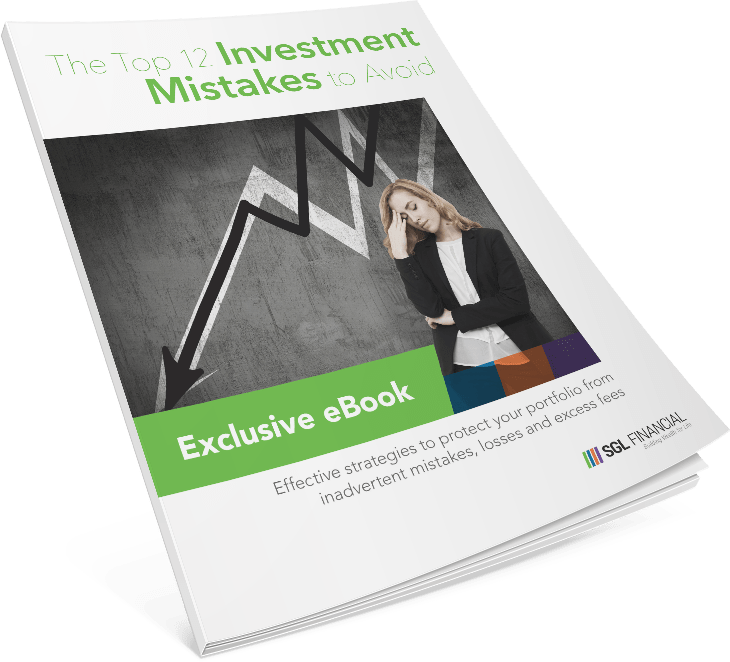Nearing Retirement? Smart Ways to Handle Market Risk
by Gabriel Lewit
If you’re approaching retirement and feel uneasy every time the market dips, you’re not alone. Market volatility creates feelings that are more personal the closer you get to being increasingly dependent on your savings accounts.
When you’re 10, 20, or 30 years from retirement, market swings may feel uncomfortable—but they don’t usually cause real long-term damage as long as you stay invested. Hanging in there becomes a bigger problem when you are retired and depend on the assets to produce income.
This is when something called the sequence of returns risk becomes critical. If you retire during a market downturn and start taking distributions after your investments have lost some value, you have locked in those losses. That can cause a portfolio to shrink faster than expected (market decline + distributions), even when the market rebounds later.
That’s why this stage of life requires more than just investment growth—it calls for a thoughtful strategy that helps reduce risk exposure and maintain flexibility.
In this article, we’ll discuss some of the top questions people ask when markets feel uncertain and explore steps of how a Buffalo Grove CFP® professional can help you build a retirement plan that can weather excess volatility.
Read our latest Quick Guide: Dealing with Financial Risk: Use Proactive Preservation Wealth Strategies
Common Questions People Ask When Markets Are Unpredictable
- Should I move all my money to cash before retiring?
It’s a common instinct, especially when headlines scream “recession” or “rate hikes.” However, shifting everything to cash often leads to missing out on future gains, while inflation erodes your assets’ purchasing power.
- How much risk is too much?
The answer depends on your goals, risk tolerance, time horizon, and how soon you’ll begin drawing income to cover your cost of living. A personalized risk analysis with a Buffalo Grove CFP® professional can help align your portfolio with your retirement timeline.
- What if the market crashes right after I retire?
This is a real concern—and one reason why a structured withdrawal plan is important. Instead of relying on luck, build a plan that separates your money into buckets based on multiple time horizons.
Check out our YouTube channel, which features videos discussing these topics in more depth, including insights on how different types of investment risk can directly impact retirees.
Steps to Help Safeguard Your Retirement Investments
Segment Your Retirement Assets by Time Horizon
Consider using a “bucket” strategy—dividing your money into short-, medium-, and long-term buckets:
- Short-term (0–3 years): Keep this portion in cash, short-term government bonds, short-term CDs or MYGAs, or other more stable, liquid investments. It will cover your near-term income needs.
- Mid-term (4–7 years): Use slightly riskier investments like a diversified stock/bond portfolio, or a Buffered ETF fund that can achieve market gains while still offering downside protection.
- Long-term (8+ years): Equities or growth-focused investments can remain here to help your investments exceed the inflation rate.
This approach allows you to keep some money invested for growth while insulating the funds you’ll need sooner rather than later.
Adjust Your Asset Allocation
Your asset mix should change as you get closer to retirement. While becoming ultra-conservative is not always necessary, reducing exposure to higher-volatility investments makes sense as you age.
Financial planners in Buffalo Grove can help you create personalized allocation strategies that reflect your risk tolerance and income needs in retirement. Regular rebalancing also keeps investments aligned with goals as markets shift.
Build an Income Floor
Think of this as your monthly paycheck in retirement. An income floor is a steady stream of funds you can rely on, regardless of what’s happening in the market. This may include:
- Social Security
- Pension plan distributions
- Annuities (if appropriate for your situation)
- Passive income streams (e.g., real estate)
- Bond ladders or other fixed-income strategies
Having a portion of your income locked in can provide stability and reduce the pressure to sell investments during a downturn.
Create a Flexible Withdrawal Plan
Instead of withdrawing the same amount every month, flexible strategies help you adjust withdrawals based on current market results. For example, you might:
- Pause withdrawals from equities during a down market and tap your cash bucket instead
- Reduce spending temporarily if markets are down significantly
A good withdrawal strategy, often modeled using advanced planning tools, helps you stress-test your plan across multiple market scenarios.
SGL Financial’s Buffalo Grove financial advisors review these scenarios with clients to help set reasonable expectations and avoid emotion-based decisions.
How Can I Monitor My Retirement Readiness?
It’s helpful to measure your retirement plan regularly.
Consider these checkpoints:
- Are your current investments aligned with your income needs for the next 1, 5, and 10 years?
- Have you tested your plan under poor market conditions?
- Do you have a backup plan for higher inflation or unexpected healthcare costs?
SGL Financial’s popular podcast, Our 2 Cents, includes conversations on these topics, including planning for long-term care, the timing for claiming Social Security benefits and building a retirement budget that funds your lifestyle.
Why Work with a Fiduciary Advisor?
While much of this may sound confusing or overwhelming, the good news is you don’t have to manage risk on your own. Working with a fiduciary advisor means getting financial guidance that always puts your best interests first.
That’s especially important as you approach retirement and need unbiased advice on income strategies, investment risk, taxes, and healthcare planning.
When you hire a Buffalo Grove CFP® professional, they should provide transparent, fee-based planning services designed around your goals—not their company’s sales quotas. Plus, working with a fiduciary advisor can help you make more informed financial decisions if you want a relationship built on trust and a long-term investment strategy.
If you’re ready to take the next step, consider contacting the SGL Financial team in Buffalo Grove. Their team of fiduciary financial planners can help you build a strategy that adapts to the market—and your life. Connect with us to learn more about our retirement planning services.

